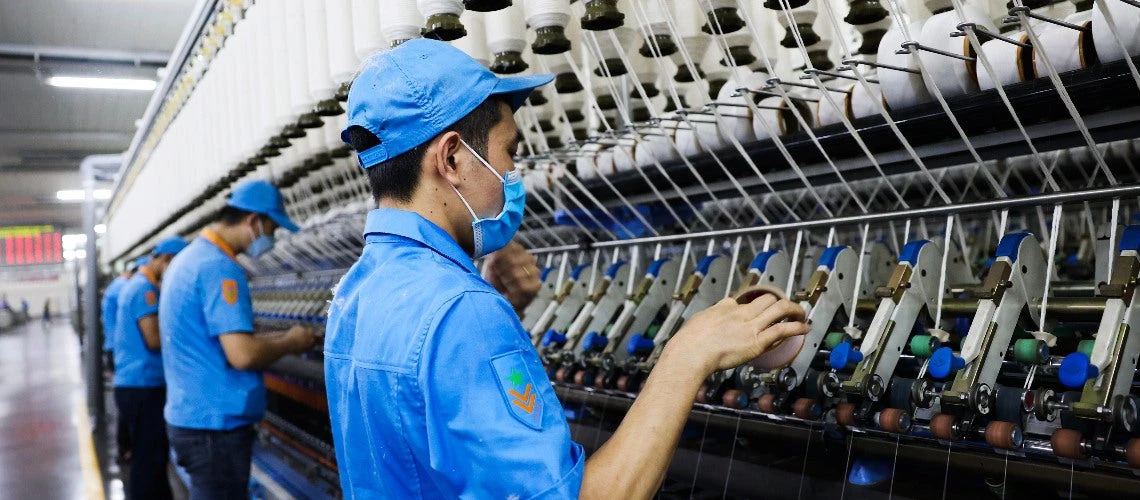 Productivity growth has led to overall job growth, but impacts vary across different groups of workers. Copyright: World Bank
Productivity growth has led to overall job growth, but impacts vary across different groups of workers. Copyright: World Bank
Productivity is the key driver of economic growth, accounting for more than half the differences across countries in GDP per capita.
There are long-standing debates, however, on the effect of productivity growth on jobs. Higher productivity enables firms to expand production, employment, and wages – but it also reduces the number of workers needed to produce a given amount of output, possibly decreasing the demand for workers. New technologies further disrupt how productivity-enhancing investments translate into jobs.
Hence, the link between firm-level productivity growth and jobs is shaped by two opposite effects:
- A negative direct labor-saving effect because a more efficient firm could produce the same amount of output with less labor
- A positive indirect effect from the expansion of output or emergence of new tasks
The indirect effect of productivity-enhancing technologies can emerge through new tasks for which labor has a comparative advantage, such as the need for machine maintenance or software development. In addition, productivity growth can increase the demand for goods and services, raising the demand for workers. Firms with higher productivity can expand and lower prices, increasing their sales and labor demand. At the aggregate level, linkages and aggregate demand have also played an important role. Such effects may be due to direct intersectoral linkages, whereby productivity growth in supplying industries can stimulate labor demand further down the value chain and vice-versa. Similarly, productivity growth that increases wages or jobs in one sector may indirectly raise consumer demand for products in other sectors.
Recent work shows that productivity growth has led to overall job growth, as increased demand for workers has outweighed technology’s replacement effects. While the literature finds that the net firm-level employment effects have been positive, impacts vary across different groups of workers. At the industry and country level, productivity growth also seems, on balance, to have increased employment. Nevertheless, while overall job effects across industries are positive, effects on jobs within an industry may still be negative.
Policymakers should help ensure that productivity growth creates more and better jobs, especially with the emergence of new technologies such as AI. Policy should ensure strong competition, which appears to positively influence productivity growth’s effect on jobs, potentially by ensuring that higher productivity leads to more sales. Further, policymakers can encourage the positive effects of productivity growth by reducing barriers to labor reallocation and supporting technology diffusion for firms.
Finally, the job effects of new technologies also depend on the balance between labor displacement and “reinstatement” through new complementary tasks. Recognizing this challenge, recent proposals for “pro-worker” AI include tax reform, stronger governmental AI expertise, and increased funding for human complementary technology research. Further research is needed to understand how policies can maximize the job creation potential of productivity growth and minimize trade-offs.
The link between productivity growth and jobs
- The current trend of generative AI on the future of work favors automation, labor displacement, and increased worker surveillance. An alternative "human-complementary" approach could promote productivity and reduce inequality. (Acemoglu et al., MIT Shaping the Future of Work Initiative, September 2023)
- In India, an increase in tradable services employment positively affects non-tradable services employment and the number of non-tradable service firms. (Avdiu et al., World Bank, July 2022)
- This study finds a positive correlation between productivity growth and employment and wage growth, suggesting policies can help convert technological and organizational changes into higher employment and wage growth. (OECD, Science, Technology, and Industry Policy Papers, August 2023)
- A survey of recent literature on the direct and indirect impacts of automation on employment finds support for positive direct effect of automation on employment due to increased productivity and demand. (Aghion et al., Working Paper, Forthcoming)
Essential readings
- A novel database spanning eight decades of new US job titles suggests that demand-eroding effects of automation innovations have intensified in the last four decades. (Autor et al., National Bureau of Economic Research, August 2022)
- Data from 28 industries across 18 OECD countries suggest that automation has not caused job losses but has reduced labor's share in the value of output. (Autor & Salomons, BPEA Conference Drafts, March 2018)
- There is an opportunity to foster AI that generates new opportunities for human employment and better economic and social outcomes. (Acemoglu & Restrepo, Cambridge Journal of Regions, Economy and Society, March 2020)
- Automation is responsible for approximately 50 to 70 percent of changes in the US wage structure over the last four decades, resulting in reduced wages for workers specializing in routine tasks. (Acemoglu & Restrepo, Econometrica, September 2022)
- Data from Germany show robot exposure in manufacturing leads to job displacement effects, but these are compensated for by new job opportunities in the services sector. (Dauth et. al, Journal of the European Economic Association, May 2021)
- This study explores the relationship between technical change and employment. (Calvino & Virgillito, Laboratory of Economics and Management Papers Series, October 2016)
Broader jobs agenda
- While technology can displace labor, compensating mechanisms often generate or restore employment. (Hotte et. al, Technological Forecasting and Social Change, September 2023)
- A natural field experiment at a large technology firm demonstrates that simple adjustments to the salary review process can prevent gender gaps from widening in employees' careers. (Alfitian et. al, IZA Institute of Labor Economics, June 2023)
- This study from Italy examines the impact of labor market regulation changes on skill demand by firms. (Bottasso et al., IZA Institute of Labor Economics, June 2023)
This blog is based on the October 2023 edition of the Knowledge4Jobs newsletter, curated by the World Bank’s Jobs Group and Labor and Skills Global Solutions Group. Click here to sign up for the Knowledge4Jobs newsletter.
To receive weekly articles, sign-up here




Join the Conversation